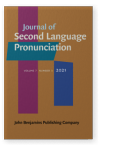Vol. 7:3 (2021) ► pp.343–369
The interplay of proficiency and study abroad experience on the prosody of L2 speech acts
Adopting Brazil’s (1997) prosodic framework, this study examined whether proficiency and study abroad experience impact second language (L2) English learners’ spoken production of speech acts. Twenty-four native English speakers and 64 Japanese learners of L2 English participated in the study. The L2 learner group was divided into three sub-groups: (1) high proficiency learners with study abroad (SA) experience (2) low proficiency learners with no SA experience, and (3) high proficiency learners without SA experience. Participants completed an oral discourse completion task that assessed their ability to produce two speech acts (requests and opinions) in high- and low-imposition situations. Prosodic features including intonation, pitch range, and sentence prominence were analyzed via PRAAT. The findings revealed a complex interplay between proficiency and SA experience on pragma-prosodic production. Implications suggest that SA may have the added benefit of providing the backdrop for authentic contextual functions of prosody in high- and low- imposition situations.
Article outline
- Introduction
- Literature review
- Effects of proficiency and study abroad on pragmatic competence
- Prosody and pragmatics
- Prosody and pragmatics in L2 speech production
- The present study
- Methods
- Participants and research site
- Instrument: Spoken discourse completion task
- Data collection
- Data analyses
- Prosodic analyses
- Statistical analyses
- Results
- Analysis of intonation patterns by situation type
- Analysis of pitch patterns by situation type
- Analysis of prominence by situation type
- Discussion
- Implications and future directions
- Note
-
References
